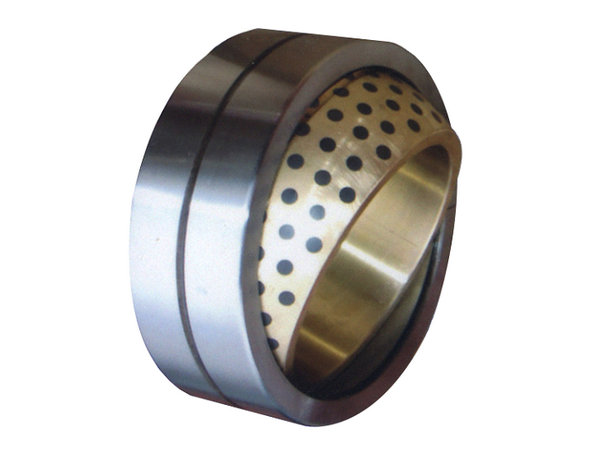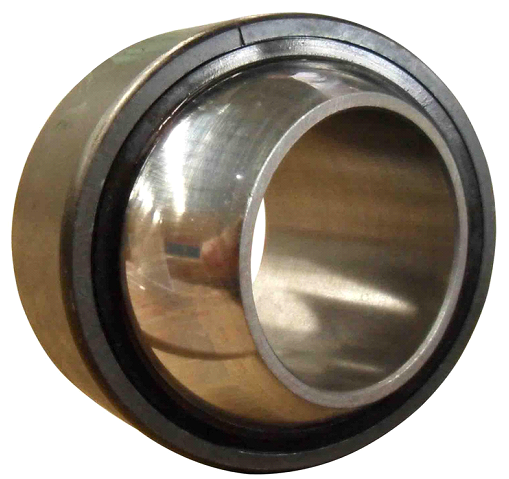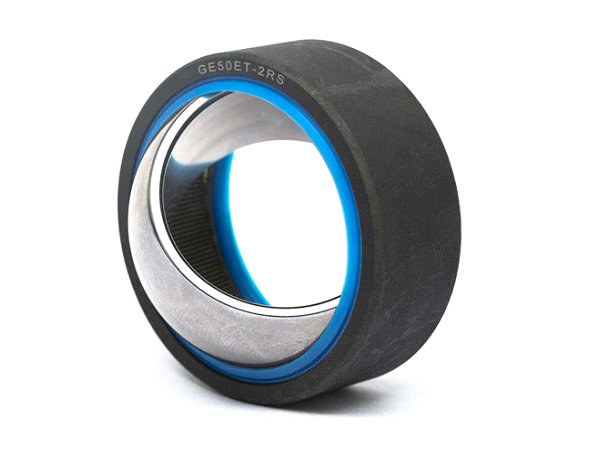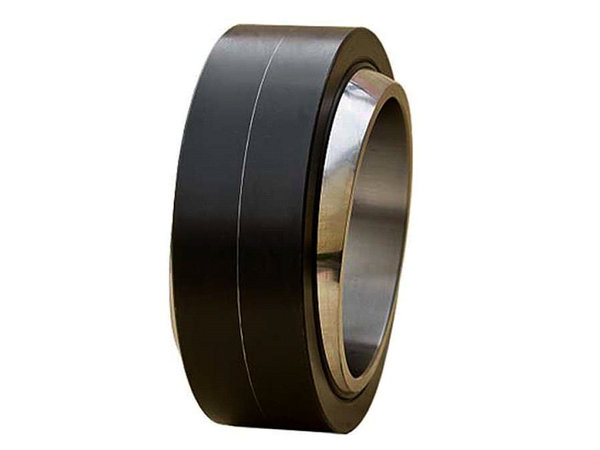Sintered oil-bearing
2016-06-12
How to improve the processing of powder metallurgy bearing wear?
First, vulcanized powder metallurgy products
Objective (a) of vulcanized
Vulcanization process in powder metallurgy products as friction-reducing material rolled bushing applications to iron-based oil bearing the most widely used. Sintered oil-bearing (including the amount of graphite 1% -4%) manufacturing process is simple, low cost, under PV <18 ~ 25 kgcm m / cm 2 · sec situation, can replace bronze, babbitt and other non-oil antifriction bearing advertising impressions
First, vulcanized powder metallurgy products
Objective (a) of vulcanized
Vulcanization process in powder metallurgy products as anti-friction bearing material applied powder metallurgy, iron-based oil bearing the most widely used. Sintered oil-bearing (including the amount of graphite 1% -4%) manufacturing process is simple, low cost, under PV <18 ~ 25 kgcm m / cm 2 · sec situation, can replace bronze, babbitt and other friction-reducing material. But under heavy operating conditions, such as high friction surface sliding speed and load larger units, the sintered parts wear resistance and life will rapidly decrease. In order to improve anti-friction porous iron base friction-reducing properties of parts, reduce the friction coefficient and improve the working temperature to expand the scope of its application, the use of vulcanization process is a worthy way.
Sulfide sulfur and most have some lubricating properties. Is a kind of good iron sulfide solid lubricant, particularly under dry conditions, the presence of iron sulfide, with good seizure resistance.
Iron-based powder metallurgy products, using its pores may be impregnated quite a lot of sulfur, sulfur and heated iron can pore surface of iron sulfide, which is evenly distributed throughout the product plays a good lubrication on the friction surface effect, and can improve the cutting performance. After the vulcanized products, friction and cutting surface looked very smooth.
Porous sintered iron sulfide after treatment, the most prominent role is a good dry friction properties. In the oil-free operating conditions (that is, or can not be allowed to refuel refueling), it is a satisfactory self-lubricating material, and has good seizure resistance and reduce the phenomenon of bite-axis. In addition, the friction properties of this material and the general anti-friction material is different. Usually material than the pressure increases, the friction coefficient begins to change little when the pressure ratio exceeds a certain value, a sharp increase in the coefficient of friction. And through the porous sintered iron sulfide after the treatment, the friction coefficient increases its pressure ratio than the pressure in a wide range increased but decreased. This is a valuable anti-friction material characteristics.
After the curing process of sintering iron-based oil bearing, can successfully work in the following 250 ℃.
(B) curing Process
Vulcanization process is relatively simple, does not require specialized equipment, the process is as follows:
Sulfur placed in a crucible and heated to melt, the temperature control in the 120 ~ 130 ℃, the sulfur flow at this time is better, if the temperature is too high, is not conducive to dipping. The need impregnated sintered article preheated to 100 ~ 150 ℃, then the article is immersed in molten sulfur was immersed for 3 to 20 minutes, not been pre-impregnated article 25 to 30 minutes. Depending on the density of the article, the wall thickness and to determine the required amount of immersion immersion time. Low density, wall thickness of immersion time may be less; and vice versa. Dip After removing products, shed the remaining sulfur. Finally, the impregnated products into the furnace, hydrogen-protection, can also be protected with charcoal, heated to 700 ~ 720 ℃ incubated 0.5 to 1 hour, at this time, sulfur and iron immersed in the role of iron sulfide. 6 to a density of 6.2 g / cm 3 article, sulfur enters about 35 to 4 percent (by weight). In order to make immersed heating firing is part of pores formed iron sulfide sulfur.
After the curing process of sintered products, can be oiled and finishing and other treatment.
Application (c) Examples of the vulcanization process
1, the hub sleeve flour machine installed in two ends of the roll, a total of four sets. A pressure of 280 kg roller, the rotational speed of 700 to 1000 rev / min (P = 10 kg / cm 2, V = 2 m / sec). Original tin bronze bushings with rejection oil ring lubrication. Now switch to a density of 5.8 g / cm 3, S containing an amount of 6.8% instead of porous sintered iron, no need for the original lubricating device before driving just a few drops of oil, continuous 40 hours, the temperature was about 40 ℃ sleeve ; 12,000 kg flour mill, the sleeve is still working properly.
2, small cone drill cone drill sleeve is an important tool for oil drilling, oil drilling at the top of this there is a slide shaft sleeve, that is a lot of pressure (pressure P = 500 kgf / cm 2, the speed V = 0.15 m / s ), and a strong vibration and shock.
Second, powder metallurgy products, immersion oil treatment
Powder metallurgy antifriction products Porous immersion oil is an important step to increase the corrosion resistance of powder metallurgy products, improve the wear resistance and prolong its life. Iron-based oil bearing sintering after immersion oil treatment, lube oil enters the product pores, when the shaft is rotated, and sets the occurrence of dynamic friction, heat, bearing temperature rise, the oil case of thermal expansion, flows out from the pores to the shaft and sleeve Auto play between oil, lubricating oil film formation and friction reduction. Immersion oil products can be prevented from being oxidized.
Oil immersion method can be divided into ordinary immersion oil, heating oil and vacuum immersion oil immersed.
Common oil-soaked: the clean oil into the sintered article (generally 20 to 30 oil) soaked. In the capillary forces of oil products, dipped into the pores of the article. This method is low efficiency immersion oil, oil-soaked long time, take a few hours, with the oil content of products is not high.
Heating oil immersion: to clean the sintered article into 80 ~ 120 ℃ hot oil soak for 1 hour. Since the product is heated, interconnected pores in the expansion of the air, so that part of the air is removed. After cooling, the remaining part of the air and contraction, and oil is sucked into the pores. Due to the good flowability of the hot oil, high lubricity, thus there is more oil into the article. The oil immersion method more efficient than ordinary oil immersion rate.
Vacuum immersion oil: to clean the sintered product placed in a vacuum chamber, sealed evacuated to -720 mm Hg, and then into the vacuum chamber into the oil, then heated to 80 ℃, for 20 to 30 minutes. Since the article interconnected pores in the air pumped out, the oil can be immersed within 10 minutes of the article. This method is high oil immersion efficiency and speed.
Another form of this method, the article is first placed in a vacuum oven air out, and then put into a preheated oil through a vacuum chamber, the article by covering the vacuum container with the atmosphere and then turned on, oil That article quickly immersed pores.
Third, wax
Powder metallurgy products have generally porous nature, the larger the contact interface with the air, etc., prone to corrosion phenomenon, especially in coastal areas wetter, air humidity, corrosion products, more serious. In some cases, not only the article surface subject to corrosion, even intercommunicating interstices surface will corrode severely affect its performance, or even cause scrap.
In order to prevent and reduce the corrosion of iron-based products, after immersion oil must also be coated with wax, in order to cut off contact with the preparation with the outside world. Thus, in the long-distance transport products to save or longer (as required, the article can not rust within six months), will not rust.
Waxing process powder metallurgy products are put into the wax on wax cylinder, heated to 60 ~ 80 ℃, so the melting wax, clean the article is immersed in liquid wax and remove immediately, that is coated on the surface of the article a uniform layer of wax, cool before packaging.
Liquid paraffin wax and petrolatum that is, according to different seasons have different proportions. Plus Vaseline aims to improve the fastness of liquid wax after drying, without cracking. The temperature is high can add less Vaseline, petroleum jelly may be appropriate to increase the ratio of the temperature is low. Generally use 20% petrolatum, 80% paraffin wax.
Fourth, packaging
Suitable packaging is to protect the powder metallurgy products in storage, during transport without damage, deterioration, is the last step in the production of powder metallurgy. If the package is not good can cause loss of the final product, it should be said to be very unfortunate.
Packing method is: the article after waxing, rust-proof paper packaging, the number of pieces of a box wrapped load, pack should put certificate and instruction manual. Outer box marked Make and address of the manufacturer, product name, type and quantity of product size and specifications. You can not cut error assembling models with different specifications and mixed. And after a number of boxed into a box, the box must be around the mat waterproof paper, each containing not more than 50 kg weight. Outside the box shall be marked with the manufacturer make and address, product name, type, size and quantity. While packing date should be marked and finally labeled "Handle with care, pay attention to moisture" mark.












 (Chat Online)
(Chat Online)







